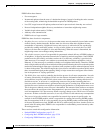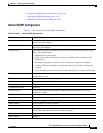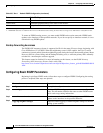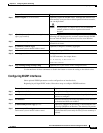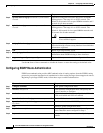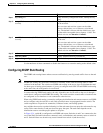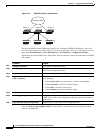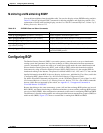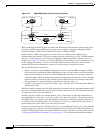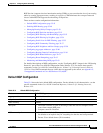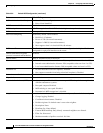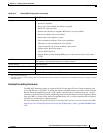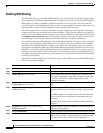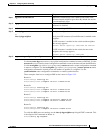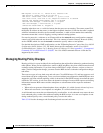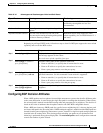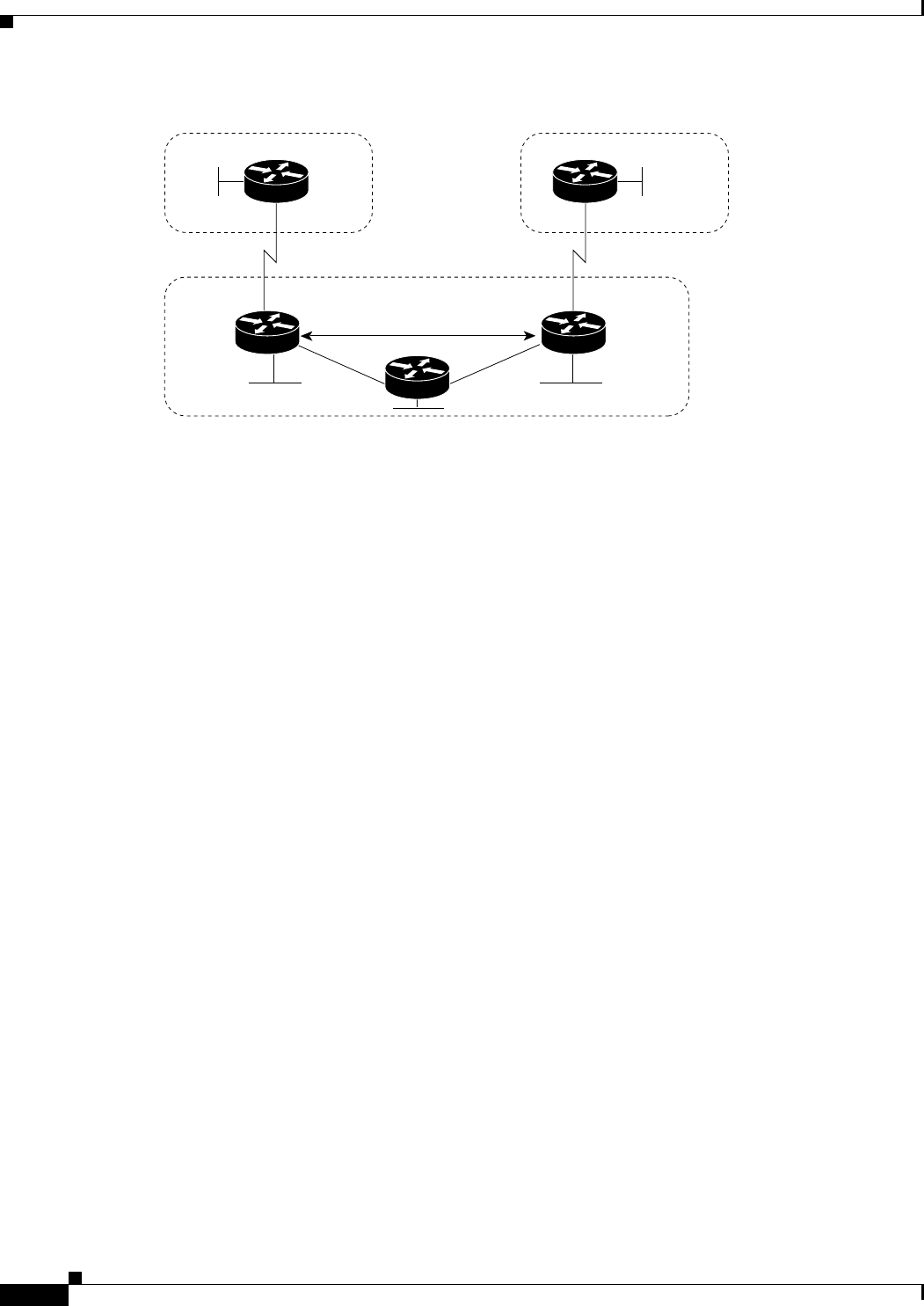
35-44
Cisco ME 3400 Ethernet Access Switch Software Configuration Guide
OL-9639-06
Chapter 35 Configuring IP Unicast Routing
Configuring BGP
Figure 35-5 EBGP, IBGP, and Multiple Autonomous Systems
Before exchanging information with an external AS, BGP ensures that networks within the AS can be
reached by defining internal BGP peering among routers within the AS and by redistributing BGP
routing information to IGPs that run within the AS, such as IGRP and OSPF.
Routers that run a BGP routing process are often referred to as BGP speakers. BGP uses the
Transmission Control Protocol (TCP) as its transport protocol (specifically port 179). Two BGP speakers
that have a TCP connection to each other for exchanging routing information are known as peers or
neighbors. In
Figure 35-5, Routers A and B are BGP peers, as are Routers B and C and Routers C and
D. The routing information is a series of AS numbers that describe the full path to the destination
network. BGP uses this information to construct a loop-free map of autonomous systems.
The network has these characteristics:
• Routers A and B are running EBGP, and Routers B and C are running IBGP. Note that the EBGP
peers are directly connected and that the IBGP peers are not. As long as there is an IGP running that
allows the two neighbors to reach one another, IBGP peers do not have to be directly connected.
• All BGP speakers within an AS must establish a peer relationship with each other. That is, the BGP
speakers within an AS must be fully meshed logically. BGP4 provides two techniques that reduce
the requirement for a logical full mesh: confederations and route reflectors.
• AS 200 is a transit AS for AS 100 and AS 300—that is, AS 200 is used to transfer packets between
AS 100 and AS 300.
BGP peers initially exchange their full BGP routing tables and then send only incremental updates. BGP
peers also exchange keepalive messages (to ensure that the connection is up) and notification messages
(in response to errors or special conditions).
In BGP, each route consists of a network number, a list of autonomous systems that information has
passed through (the autonomous system path), and a list of other path attributes. The primary function
of a BGP system is to exchange network reachability information, including information about the list
of AS paths, with other BGP systems. This information can be used to determine AS connectivity, to
prune routing loops, and to enforce AS-level policy decisions.
A router or switch running Cisco IOS does not select or use an IBGP route unless it has a route available
to the next-hop router and it has received synchronization from an IGP (unless IGP synchronization is
disabled). When multiple routes are available, BGP bases its path selection on attribute values. See the
“Configuring BGP Decision Attributes” section on page 35-51 for information about BGP attributes.
AS 100
74775
AS 200
129.213.1.2
175.220.212.1
129.213.1.1
192.208.10.2
AS 300
EBGP
EBGP
192.208.10.1
175.220.1.2
IBGP
Router B
Router A
Router D
Router C



